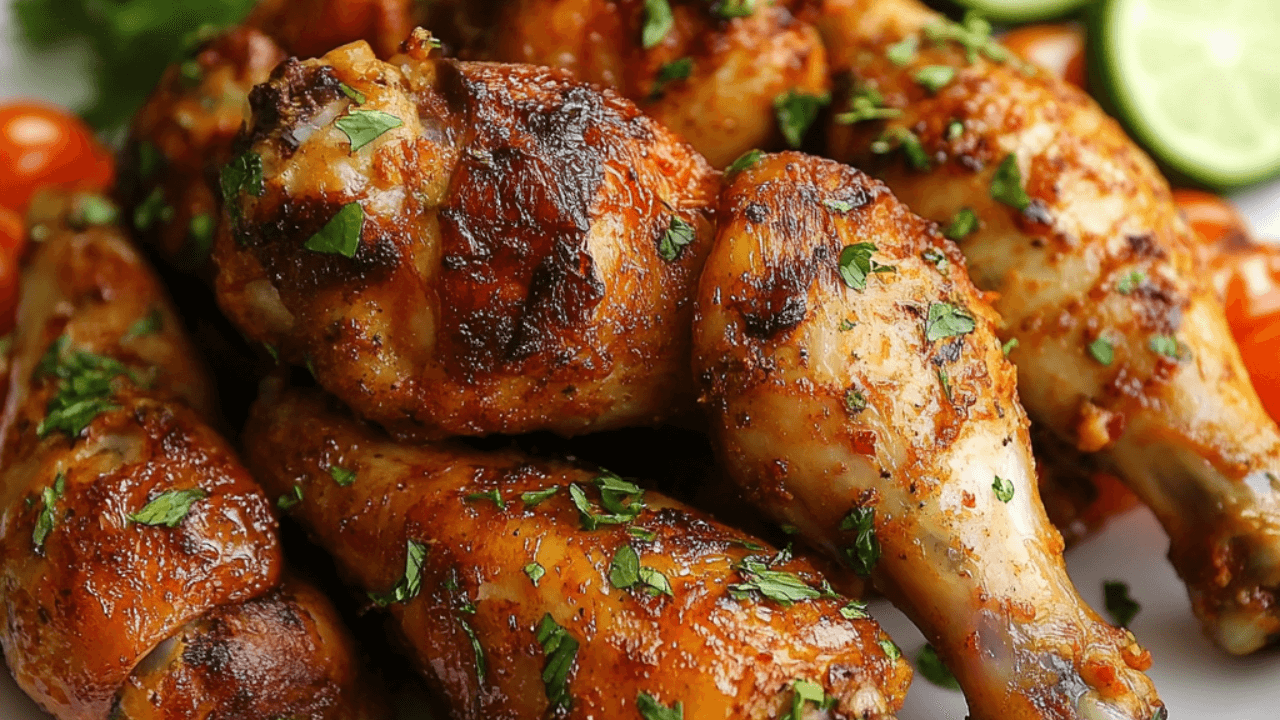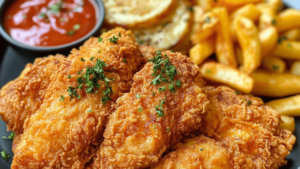How to Make Chicken Soft Like Restaurants ? If you’ve ever wondered how restaurants consistently serve up perfectly tender chicken, you’re in for a treat. In this comprehensive guide, we’ll delve into the secrets behind achieving that melt-in-your-mouth texture at home. From marination to cooking techniques, and even tips on serving and storing, you’ll learn everything you need to know to make your chicken as soft as the pros. Ready to get started? Let’s dive in!
When it comes to cooking chicken, tenderness is key. Nobody wants to bite into a tough, chewy piece of meat, right? In this article, we’ll explore various methods and techniques to ensure your chicken is always tender and flavorful, just like it is in your favorite restaurant. Whether you’re a seasoned cook or a kitchen newbie, these tips and tricks will elevate your chicken dishes to a whole new level.
Understanding the Basics of Chicken Tenderness
Understanding Chicken Texture
To master the art of making chicken tender, it’s crucial to understand what affects its texture. Chicken tenderness can vary based on several factors, including the type of chicken, its age, and the cut you’re using.
- Definition of Chicken Tenderness: Tenderness refers to how easily the meat breaks apart and how soft it feels when you chew it. Factors like muscle fiber composition and fat content play a significant role in determining the texture.
- Factors Affecting Chicken Texture:
- Type of Chicken: Organic or free-range chickens often have a different texture compared to commercially raised ones.
- Age of Chicken: Younger chickens tend to be more tender.
- Cut of Chicken: Different cuts, such as breasts, thighs, and wings, have varying levels of tenderness.
Understanding these basics sets the stage for the techniques we’ll discuss in the following sections.
How to make chicken soft like restaurants?
Marination Techniques
Marinating chicken is a tried-and-true method to enhance its tenderness and flavor. Let’s dive into why marination is important and the types of marinades you can use.
Why Marination is Important
- Breakdown of Muscle Fibers: Marinades often contain acidic or enzymatic components that help break down the tough muscle fibers in chicken, making it softer.
- Flavor Enhancement: Marinades infuse the chicken with delicious flavors, ensuring each bite is bursting with taste.
Types of Marinades
- Acidic Marinades: Ingredients like citrus juices and vinegar are common in acidic marinades. They help to tenderize the meat effectively.
- Enzymatic Marinades: Fruits such as pineapple and papaya contain enzymes that break down proteins, making the chicken tender.
- Dairy-Based Marinades: Buttermilk and yogurt are excellent for tenderizing chicken while adding a creamy texture and tangy flavor.
Marination Tips
- Duration of Marination: Depending on the marinade, you might need to marinate your chicken for a few hours to overnight. Acidic marinades usually require less time compared to enzymatic or dairy-based ones.
- Proper Marination Techniques: Ensure that the chicken is evenly coated and fully submerged in the marinade for the best results.
Brining
Brining is another fantastic method to ensure tender chicken. It involves soaking the chicken in a saltwater solution, which helps to enhance moisture and tenderness.
What is Brining?
Brining works by allowing the chicken to absorb the seasoned liquid, which not only adds flavor but also helps the meat retain moisture during cooking.
Types of Brines
- Wet Brine: A mixture of water, salt, and sometimes sugar or spices. The chicken is submerged in this solution for several hours.
- Dry Brine: Involves rubbing the chicken with a salt mixture and letting it sit. This method also helps to draw out moisture and reabsorb it, making the meat tender.
Steps for Effective Brining
- Ingredients Needed: Typically, you’ll need water, salt, and optional flavorings like herbs, spices, or sugar.
- Duration and Process: Depending on the size of the chicken, brining can take from a few hours to overnight. Ensure the chicken is fully submerged in the brine for optimal results.
Cooking Techniques for Tender Chicken
Sous Vide Cooking
Sous vide is a popular cooking technique that ensures perfectly tender chicken every time.
What is Sous Vide?
Sous vide involves cooking chicken in a vacuum-sealed bag immersed in a water bath at a precise, consistent temperature.
Benefits of Sous Vide for Chicken
- Consistent Temperature Control: This method allows you to cook the chicken evenly without overcooking it.
- Retention of Moisture: The vacuum-sealed bag helps retain the chicken’s natural juices, resulting in incredibly moist and tender meat.
How to Sous Vide Chicken at Home
- Equipment Needed: You’ll need a sous vide machine and vacuum-sealable bags.
- Step-by-Step Process: Season the chicken, vacuum-seal it, and set the sous vide machine to the desired temperature. Cook for the recommended time, then sear the chicken briefly for a perfect finish.
Slow Cooking
Slow cooking is another method that can help you achieve tender chicken with minimal effort.
Why Slow Cooking Works
Slow cooking involves cooking chicken at low temperatures for extended periods, which helps to break down tough fibers and connective tissues.
Types of Slow Cooking Methods
- Crockpot: A convenient appliance for slow cooking chicken dishes. Simply set it and forget it.
- Oven: Slow cooking can also be done in the oven at a low temperature.
Recipes and Techniques
- Suggested Recipes: Chicken stews, casseroles, and braised dishes are perfect for slow cooking.
- Tips for Best Results: Use ample liquid, cover the chicken to retain moisture, and avoid lifting the lid during cooking.
Pressure Cooking
Pressure cooking is a quick way to tenderize chicken without sacrificing flavor.
Benefits of Pressure Cooking
- Speed and Efficiency: Pressure cooking drastically reduces the cooking time while maintaining moisture.
- How to Use a Pressure Cooker for Chicken: Place the seasoned chicken and liquid in the pressure cooker, seal the lid, and cook on high pressure for the recommended time.
Common Mistakes to Avoid
- Overcooking: Keep an eye on the cooking time to avoid overcooking the chicken.
- Insufficient Liquid: Ensure there’s enough liquid to create steam and prevent the chicken from drying out.
Additional Tips for Tender Chicken
Choosing the Right Cut of Chicken
The cut of chicken you use can significantly impact its tenderness.
Best Cuts for Tenderness
- Chicken Thighs vs. Breasts: Thighs are generally more forgiving and stay tender even if slightly overcooked. Breasts, on the other hand, require more precise cooking.
Deboning and Trimming Tips
- How to Prepare Chicken Cuts for Tenderness: Properly trimming excess fat and removing bones can help in cooking evenly and achieving tenderness.
Using Meat Tenderizers
Meat tenderizers can be a handy tool in your kitchen arsenal.
Types of Meat Tenderizers
- Mechanical Tenderizers: Tools like mallets and blades physically break down the muscle fibers.
- Chemical Tenderizers: Store-bought tenderizing powders can also be used to soften the meat.
How to Use Them Effectively
- Techniques and Tips: Use gentle pressure when using mechanical tenderizers to avoid damaging the meat. Follow package instructions for chemical tenderizers.
Serving and Storing Tender Chicken
How to make chicken soft like restaurants?
How to Serve Chicken to Retain Tenderness
- Resting the Meat: Let the chicken rest after cooking to allow the juices to redistribute.
- Slicing Techniques: Slice against the grain to ensure each bite is tender.
Storing and Reheating
Proper storage and reheating are crucial to maintaining tenderness.
Proper Storage Methods
- Refrigeration: Store leftover chicken in an airtight container in the refrigerator.
- Freezing: For longer storage, freeze the chicken in portions.
Reheating Without Losing Tenderness
- Oven: Reheat in the oven at a low temperature to avoid drying out.
- Microwave Tips: Use a microwave-safe cover to retain moisture while reheating.
Seasoning and Flavoring Techniques
Importance of Seasoning
Seasoning is key to making your chicken not just tender, but also flavorful. Proper seasoning can elevate a dish from bland to delicious.
Basics of Seasoning Chicken
- Salt and Pepper: The foundation of any good seasoning.
- Herbs and Spices: Adding herbs like thyme, rosemary, and spices such as paprika and garlic powder can bring out the best in your chicken.
Advanced Flavoring Techniques
Spice Rubs
- Dry Rubs: A mixture of spices and herbs that you rub directly onto the chicken. This technique adds a layer of intense flavor.
- How to Apply: Ensure the chicken is dry before applying the rub for maximum adherence.
Marinade Enhancements
- Flavorful Marinades: Beyond the basic marination techniques, enhance the flavor by adding ingredients like soy sauce, honey, and fresh herbs to your marinades.
- Combining Ingredients: Experiment with combinations such as garlic, ginger, and lemon for a zesty marinade.
Glazing
- Glazing Techniques: Applying a glaze during the last few minutes of cooking can add a glossy finish and additional flavor.
- Popular Glazes: Honey mustard, teriyaki, and balsamic glazes are great choices.
Infusing Flavor During Cooking
Stuffing
- Stuffing with Aromatics: Insert aromatics like garlic, onions, and fresh herbs into the chicken cavity or under the skin before cooking.
- Benefits: This technique infuses the chicken with deep, aromatic flavors.
Basting
- Basting During Cooking: Regularly spooning pan juices or a seasoned broth over the chicken as it cooks.
- Impact on Flavor: Basting keeps the chicken moist and flavorful.
Using External Ingredients
Adding Vegetables and Fruits
- Roasting with Vegetables: Roast chicken with vegetables like carrots, potatoes, and bell peppers to absorb their flavors.
- Fruit Additions: Adding fruits like lemons, oranges, or apples can give a subtle, sweet undertone to your dish.
Sauces and Dips
- Complementary Sauces: Serve your tender chicken with sauces like gravy, chimichurri, or aioli.
- Homemade Dips: Create dips using yogurt, herbs, and spices to add an extra burst of flavor.
Flavor Pairing Suggestions
Classic Combinations
- Lemon and Herbs: Lemon paired with rosemary or thyme is a classic combination for chicken.
- Spicy and Sweet: Combine chili powder with honey for a sweet and spicy flavor profile.
Innovative Ideas
- Global Flavors: Experiment with global seasoning blends such as curry powder for an Indian twist or za’atar for Middle Eastern flair.
- Umami Boosters: Ingredients like soy sauce, miso paste, or anchovy paste can add depth to your chicken dishes.
Frequently Asked Questions
- How long should I marinate chicken?: It depends on the marinade, but generally, 30 minutes to 24 hours.
- Can I use a brine for all types of chicken?: Yes, brining works well for most cuts.
- What’s the best way to reheat chicken without drying it out?: Reheat slowly in the oven or use a microwave with a cover.
- Is it necessary to rest chicken after cooking?: Absolutely, resting helps retain juices and enhances tenderness.
Internal Linking Opportunities
- Link Phrase: « juicy roasted chicken »
- URL: https://susierecipes.com/index.php/2024/04/16/juicy-roasted-chicken/
- Placement: In the section « Brining, » you can mention, « For more tips on achieving juicy roasted chicken, check out this detailed guide on how to prepare juicy roasted chicken. »
- Link Phrase: « chicken cutlet recipes »
- URL: https://susierecipes.com/index.php/2024/04/23/chicken-cutlet-recipes/
- Placement: In the section « Choosing the Right Cut of Chicken, » you can say, « If you’re interested in trying different cuts, here are some delicious chicken cutlet recipes to explore. »
- Link Phrase: « chicken marsala fettuccine »
- URL: https://susierecipes.com/index.php/2024/04/18/chicken-marsala-fettuccine/
- Placement: In the section « Seasoning and Flavoring Techniques, » you can include, « For a flavorful dish, consider this recipe for chicken marsala fettuccine that perfectly balances seasoning and tenderness. »
External Linking Opportunities
- Link Phrase: « cooking a chicken to make it really soft »
- URL: https://cooking.stackexchange.com/questions/13048/how-do-i-cook-a-chicken-to-make-it-really-really-really-soft
- Placement: In the section « Understanding Chicken Texture, » you can mention, « Understanding the methods for cooking a chicken to make it really soft is essential for achieving the perfect texture. »
- Link Phrase: « tips for moist, juicy, and tender chicken »
- URL: https://jerseycook.wordpress.com/2010/02/22/tips-for-moist-juicy-and-tender-chicken/
- Placement: In the section « Brining, » you can include, « For additional insights on maintaining moisture, check out these tips for moist, juicy, and tender chicken. »
- Link Phrase: « velveting chicken »
- URL: https://www.recipetineats.com/velveting-chicken-chinese-restaurant-tenderise-chicken/
- Placement: In the section « Cooking Techniques for Tender Chicken, » you can add, « An interesting method called velveting chicken can also be used to achieve a restaurant-quality texture. »
Conclusion:
How to make chicken soft like restaurants? Achieving restaurant-quality tender chicken at home is not only possible but also quite straightforward with the right techniques and a bit of practice. From understanding the basics of chicken tenderness to mastering marination, brining, and various cooking methods, you’ve now got a comprehensive guide to making your chicken as soft and juicy as the pros. Don’t forget to experiment with seasoning and flavoring techniques to elevate your dishes even further. By incorporating these tips and tricks into your cooking routine, you can impress your family and friends with perfectly tender chicken every time. Happy cooking!



